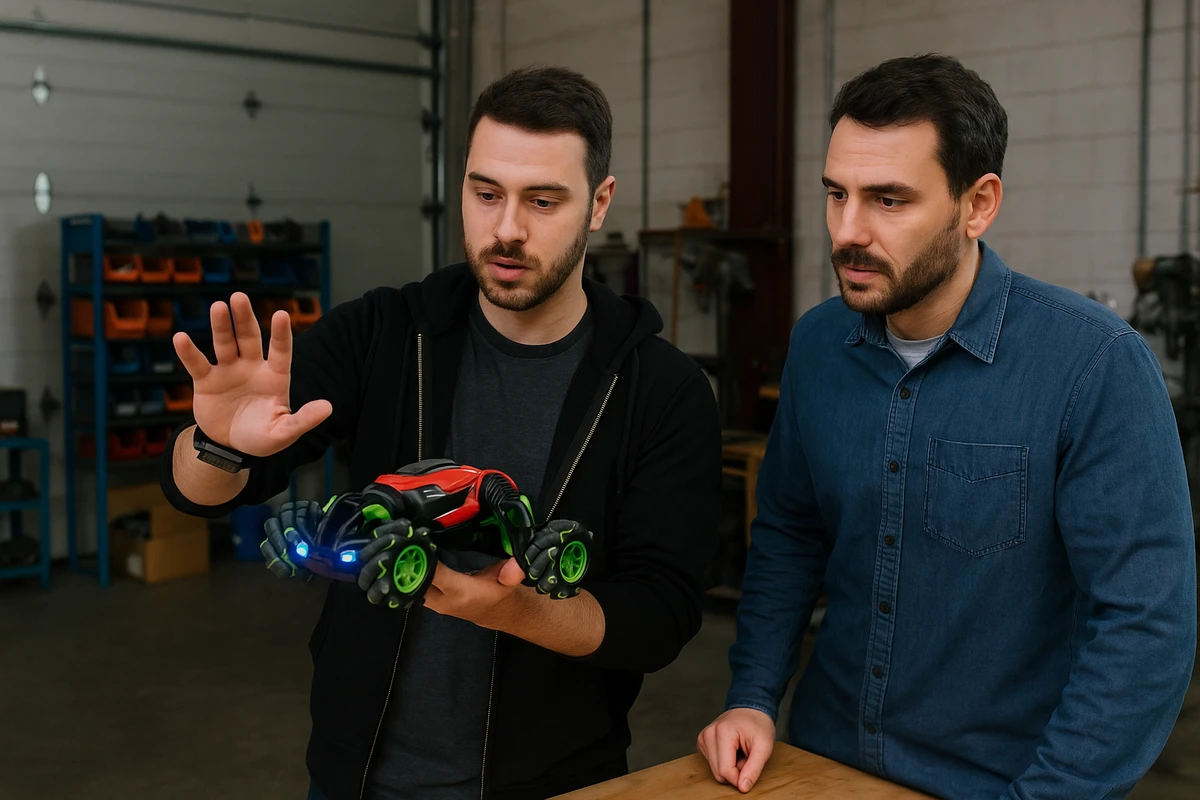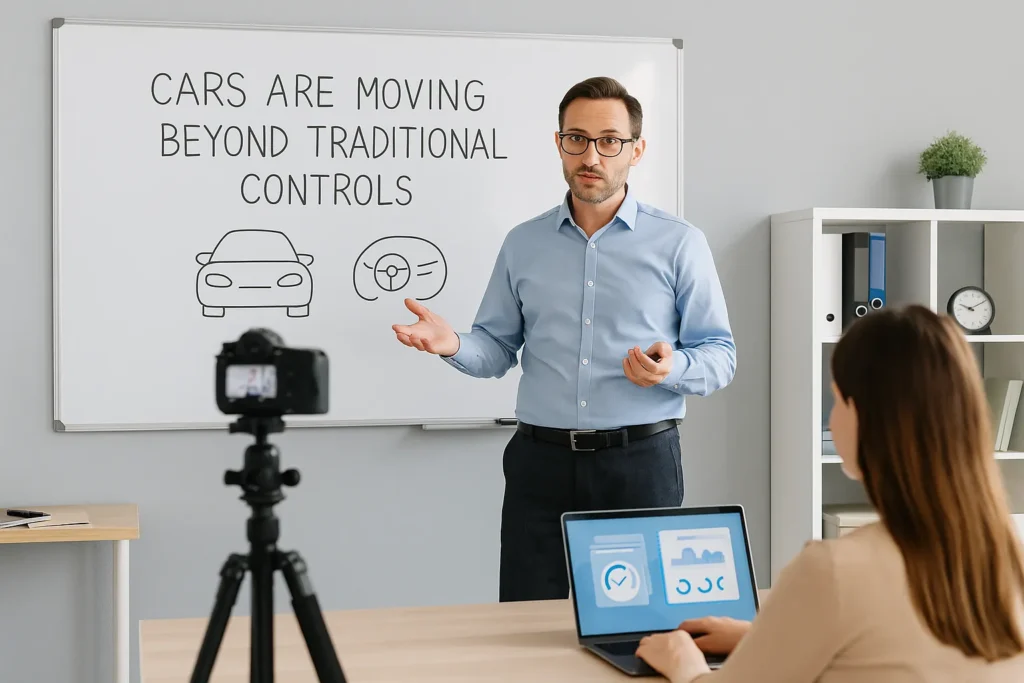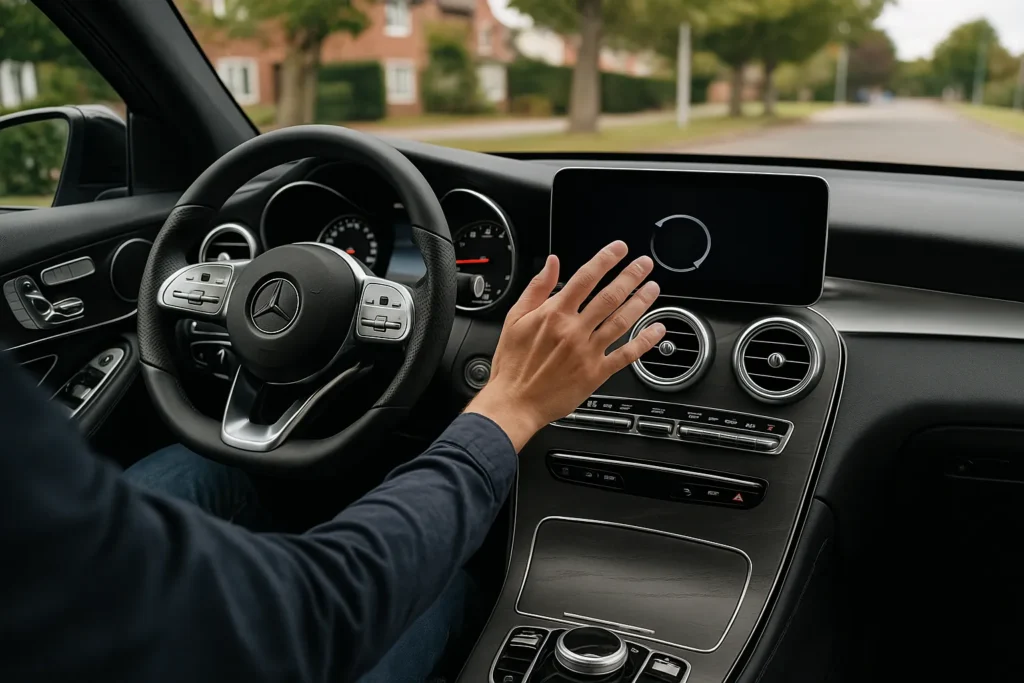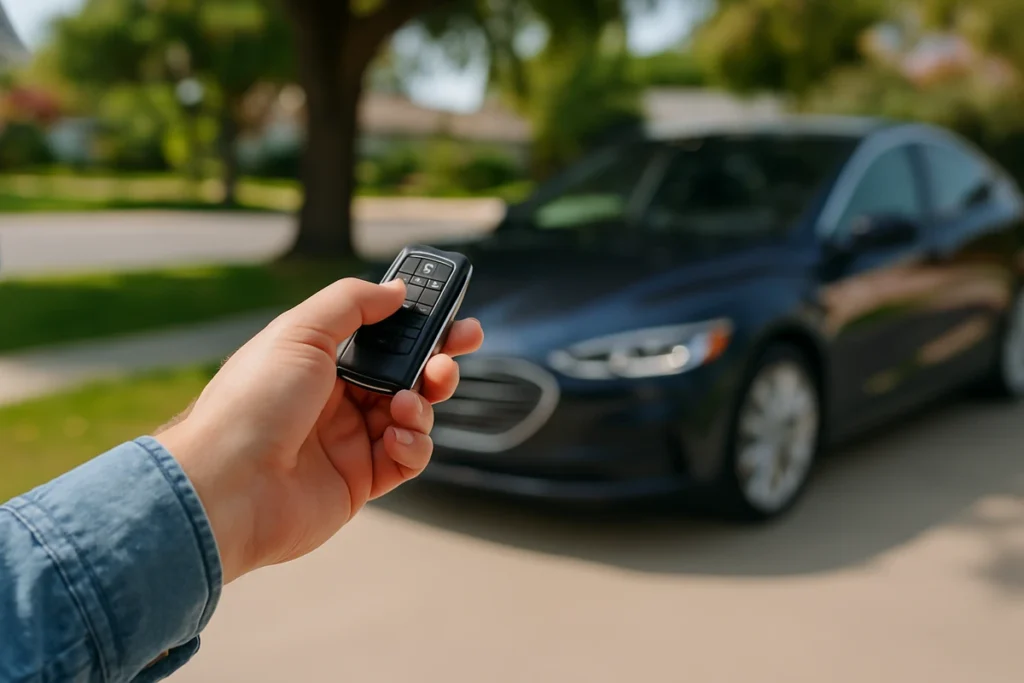
You reach for the volume control while changing lanes. Then you realize how dangerous that was. Now think about this: wave your hand and your car responds. Yes, this is possible today with automotive gesture recognition technology. This new system offers safer driving with hands-free vehicle control. But that’s just the start.
In today’s blog, Movea Tech will show you real applications, technology insights, and how to use them. These ideas will help you understand how gesture control systems are changing the automotive industry.
If you’re ready to learn about tomorrow’s driving interface, let’s start by exploring today’s reality.
Cars are ditching buttons and knobs because traditional controls force drivers to look away from the road. This creates dangerous distractions that put everyone at risk. Here are the main reasons why traditional controls are becoming obsolete:

These problems show why the automotive industry is moving toward gesture-based solutions that solve these fundamental issues.
Gesture control systems make driving safer by letting you control your car without taking your eyes off traffic or your hands off the wheel. Let’s be honest here, most of us have done the dangerous reach-for-controls move while driving. This technology changes that completely by keeping your focus where it belongs.
Your eyes stay focused on the road while your hands control music, climate, and navigation systems. You can adjust your air conditioning with a simple wave gesture. Need to skip a song? Just flick your finger to the right. Want to answer a call? Point at the infotainment system display. All of these actions happen without you looking down or reaching across the car interior.
Another advantage is that natural hand movements feel more familiar than memorizing button locations and sequences. Your brain already knows how to point, wave, and gesture naturally. These motions don’t require the same concentration that finding tiny buttons does. The learning curve is much shorter for most users who try this technology.
What’s even better is that emergencies allow faster response when controls don’t require visual confirmation. When you need to react quickly to traffic, your hands can stay on the steering wheel. You can still access critical vehicle safety features through simple gestures (because distracted driving causes over 325,000 injuries annually).
Ever wonder how your car actually “sees” your hand movements? You might be wondering how your car actually tells the difference between an intentional wave and just scratching your nose. Three core technologies work together to create seamless vehicle motion recognition.
|
Technology |
Function |
Purpose |
|
Infrared Cameras |
Track hand position in 3D space |
Detect precise movements |
|
Radar Sensors |
Filter intentional vs accidental gestures |
Prevent false activation |
|
AI Software |
Learn individual patterns |
Improve accuracy over time |
Drawing from our experience testing various motion control systems, these sensors create reliable gesture recognition. Infrared cameras track hand position and movement patterns in three-dimensional space. This technology detects even small finger movements with incredible precision throughout your vehicle’s interior.
But cameras alone aren’t enough. Radar sensors distinguish intentional gestures from accidental hand movements and vibrations. They filter out unintentional motions to prevent false activation when you’re adjusting your shirt.
The real magic happens with the software layer. Machine learning algorithms improve accuracy by studying individual driver patterns. This system integration gets smarter as it learns your specific gestures, creating personalized vehicle functions.
Now that you understand how the technology works, let’s see it in action. But wait, there’s more to it than just fancy tech demos. Real car manufacturers are putting gesture control systems in vehicles you can buy today.

Ever wanted to feel like a magician while driving? BMW’s gesture control makes it possible. Draw circles in the air and watch your volume adjust like magic. Need to answer that important call? Just point at the screen. It’s that simple. The system works so well that passengers often think you’re showing off.
Mercedes took a different approach with their MBUX Interior Assistant. Reach for something and the car knows what you want. Need more light? Wave your hand near the mirror and boom, reading lamp turns on. The system watches your movements like a helpful assistant who anticipates your needs.
Here’s what’s really exciting about all this technology. These aren’t gimmicky features that break after a week. They’re solid, reliable systems that actually make your daily drive easier and safer than traditional controls.
Software defined vehicles offer something traditional cars never could: they get smarter over time. And that’s where things get interesting, your car becomes more intuitive the longer you drive it.
Think about how your smartphone learns your habits. Software defined vehicles work the same way, but for your driving preferences. What makes this special is that custom gesture programming lets you assign personal commands for frequently used functions.
Want a quick swipe to skip songs? Set it up once and you’re done. Prefer pointing left to lower the temperature? The system remembers that too.
The best part happens automatically. Over-the-air updates add new gesture capabilities without visiting the dealership ever again. Your car downloads improvements while parked in your driveway, just like your phone updates apps overnight. Individual driver profiles remember preferred gestures and sensitivity settings for each user in your family.
This creates a vehicle that adapts to you instead of forcing you to adapt to it. Your car literally learns your style and gets better at predicting what you need before you even gesture for it.
Did you know gesture control works even when you’re not inside your car? Most people think these systems only function from the driver’s seat, but remote control capabilities extend far beyond the cabin.

These remote features prove that gesture control transforms your entire vehicle interaction experience.
Even the most reliable gesture control systems face three main hurdles. But here’s the good news: manufacturers have found smart ways to tackle each problem.
Through our practical knowledge working with automotive partners, we’ve seen these improvements transform gesture control from a cool party trick into something you’d actually want in your daily driver.
You can try gesture control right now at most car dealerships. No waiting, no special appointments needed.
The first time you wave at your car and it actually responds feels pretty wild. People often laugh when they see it work. After a few minutes of testing, you start wondering why every car doesn’t have this yet.
Begin with basic stuff like changing volume. Once you get comfortable, try the navigation features. Most folks pick it up within minutes.
At Movea Tech, we think gesture control makes driving feel more human, not more robotic. Your car finally pays attention to what you want instead of making you hunt for the right button.